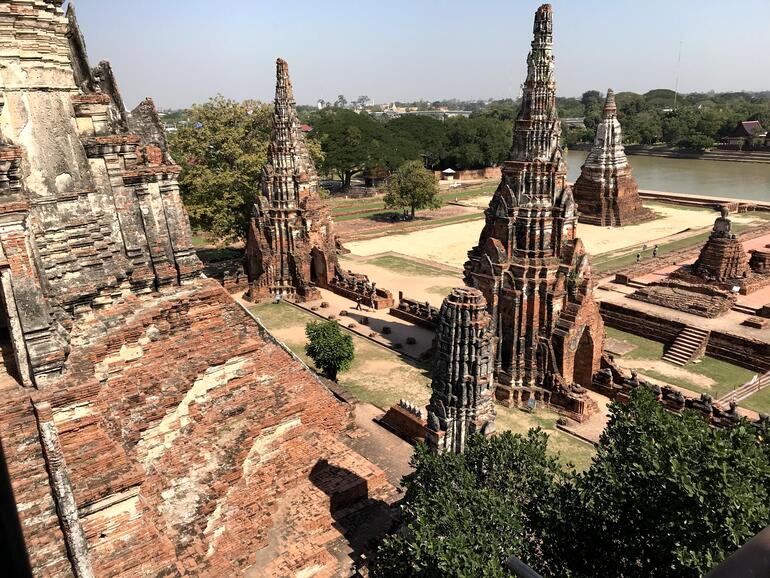
The temple of Wat Chaiwatthanaram was built during the Ayutthaya period in 1630, under the reign of King Prasatthong. The most prestigious of his monuments, Wat Chai remained the setting for royal ceremonies and cremations until the end of the Ayutthaya period.
After the fall of the Ayutthaya Kingdom in 1767, Wat Chai was abandoned and left to ruin, its deterioration exacerbated by vandalism and the removal of the structure’s bricks for reuse.
When the site was partially submerged due to floods in 2011, World Monuments Fund (WMF) was invited by the Fine Arts Department (FAD) of Thailand to assess damage to the temple's fragile stucco and sculptural elements.
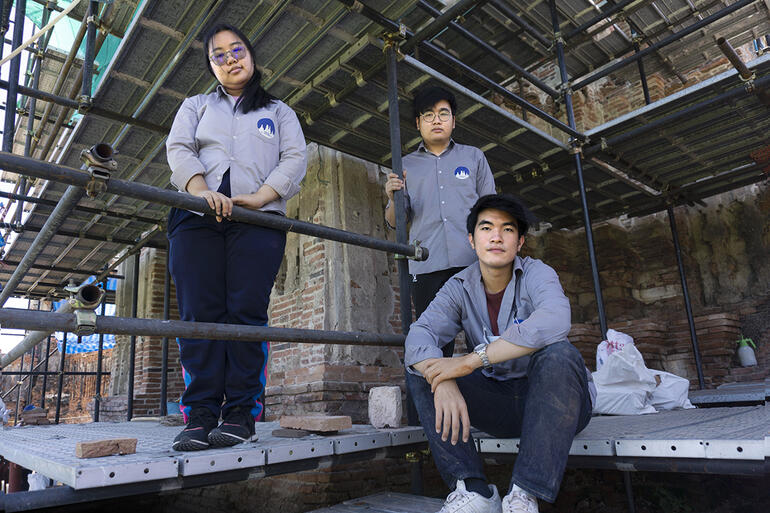
Over time, WMF’s involvement at Wat Chai evolved into a fully-fledged conservation campaign as well as a project to develop a training program with FAD aimed at enhancing long-term stewardship of Wat Chai and heritage sites around Thailand.
In July 2021, WMF launched a six-week conservation internship program with FAD and the U.S. Embassy in Bangkok at Wat Chai to build on this objective, designed to forge a stronger relationship between FAD and Thai universities.
Five university students were selected among 45 applicants to conduct hands-on conservation work throughout the summer alongside WMF's local team. In the following slides, interns Anan, Shanikant, and Nopasin share their experiences and hopes for the future.
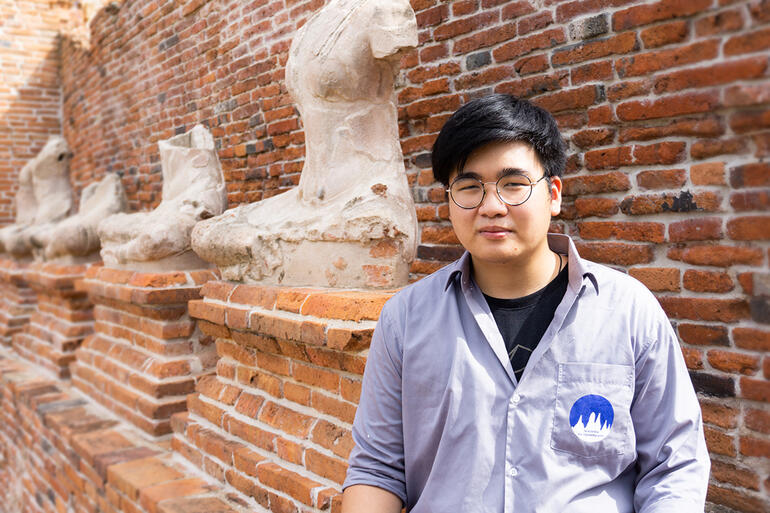
Anan Wattanathum
Anan Wattanathum is a student of archaeology at Silpakorn University in Bangkok. His childhood passion for historical artifacts and artworks inspired him to envision a career as a curator or conservator. The program gave Anan a place to practice physical conservation skills alongside international conservation experts, such as WMF Regional Director for Southeast Asia Jeff Allen.
Conservation work, says Anan, remains misunderstood in Thailand. "I strongly hope that conservation becomes a more common career in Thai society," he explained, "with more recognition of the importance of this work. We are still far from that point."
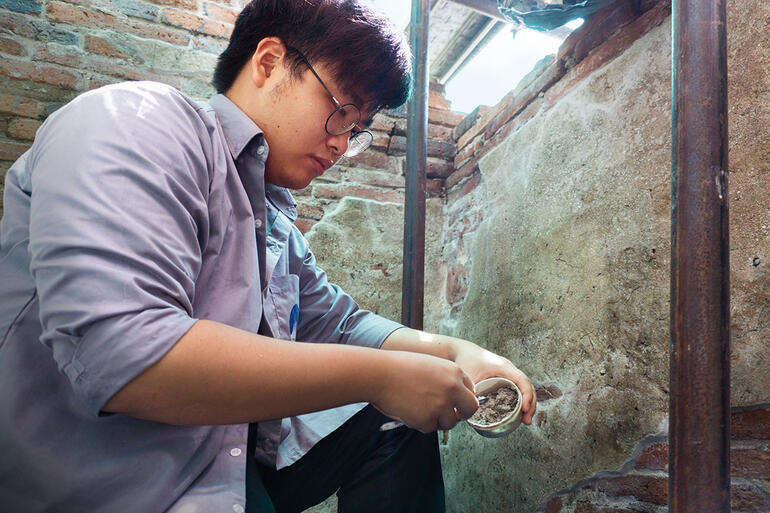
“I discovered so many artistic details hidden under the dust at Wat Chai, in unreachable areas, or in places that were invisible to me as an ordinary visitor. Some monasteries are said to be ‘Living Ayutthaya,’ I find that Wat Chai is one of these, still breathing, quietly, in its own way.”
- Anan Wattanathum
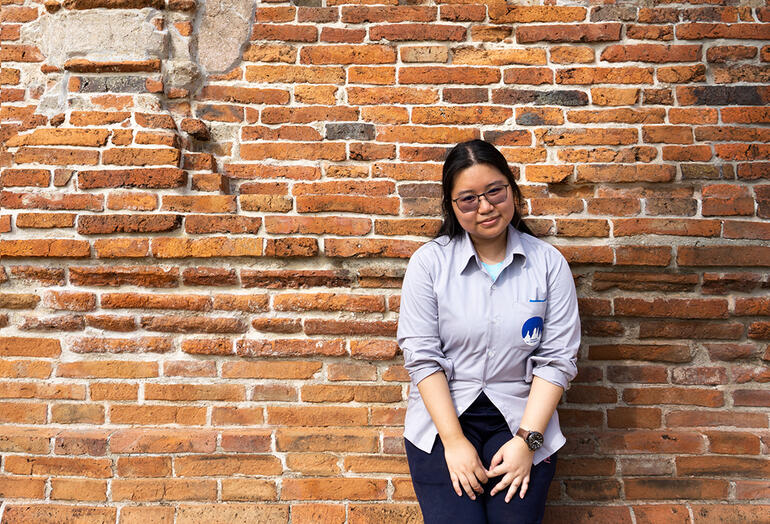
Shanikant Nimplum
As an undergraduate student at Chula's Faculty of Arts, Shanikant Nimplum majored in Pali-Sanskrit and enrolled in elective classes on Thai culture.
For her, heritage preservation is inextricably linked to community – the source of local wisdom and know-how. “In my opinion, how much people can learn from the past depends on how well we maintain things for them,” she explained. "During my time at Wat Chai, I discovered that long-term heritage preservation in Thailand has a lot to do with people, particularly their thoughts toward history and cultural heritage."
Through the internship program, Shanikant was also able to find more clarity regarding her future career.
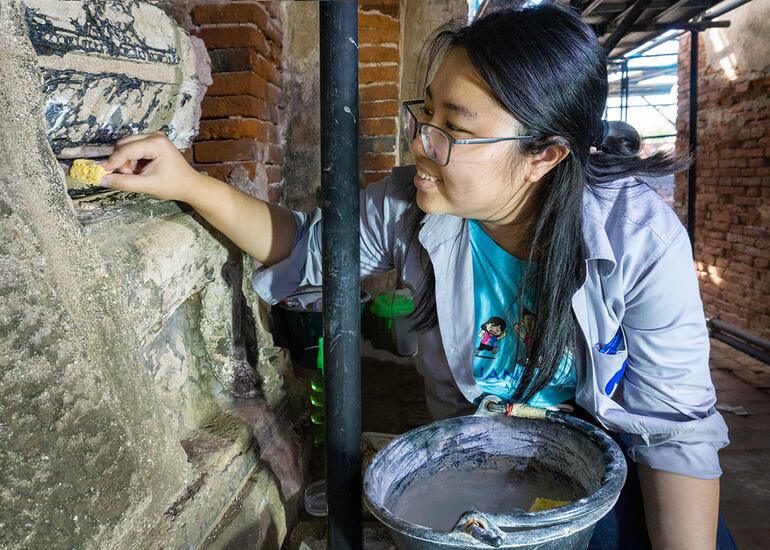
"My dream after graduation is to use my knowledge and skills to connect people and history. This internship program gave me many ideas to create relationships between historic buildings, conservation, and society.”
- Shanikant Nimplum
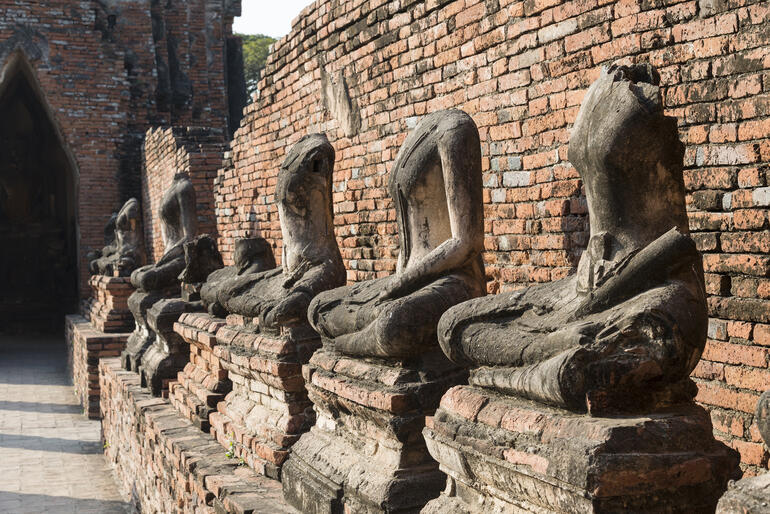
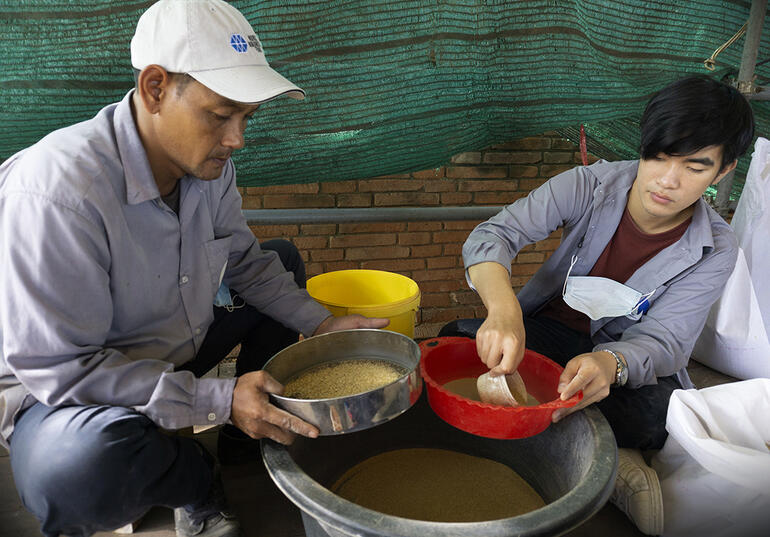
Nopasin Chaiparichat
Nopasin Chaiparichat is currently studying architecture at Chulalongkorn University, including architectural history, heritage preservation, and architectural design. Before beginning the internship, he had never visited Wat Chai. There, he discovered the many stakeholders involved in the site’s preservation.
Nopasin’s favorite aspect of the internship? The hands-on work. “My favorite part was when I got the chance to do brick masonry work with technicians. This showed me how what I’ve learned in architecture school can be really different from what I learn in real life.”
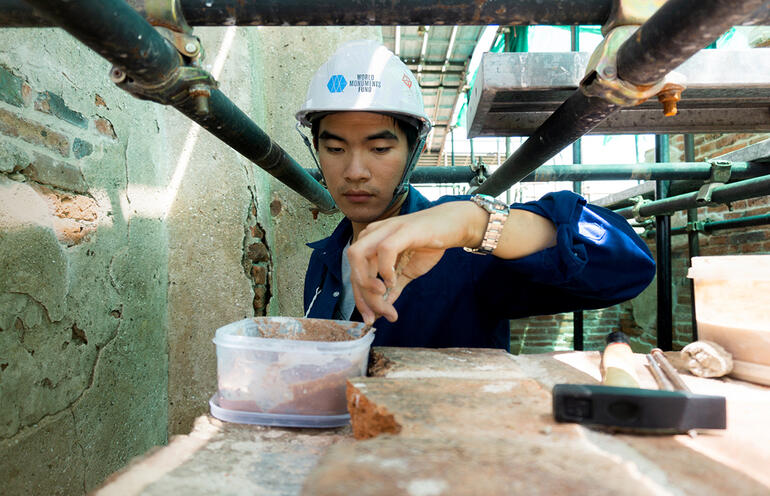
“From technicians, conservators, and tourists to the local community around the site, each group contributes to a system that will provide a sustainable solution in heritage conservation in the future.”
- Nopasin Chaiparichat
In addition to conservation internships, WMF also conducts lectures at universities across Thailand and organizes school field trips to Wat Chaiwatthanaram, raising awareness of the value of heritage preservation and creating opportunities for conservation capacity building.
Other training programs spearheaded by WMF exist around the world, including in Lebanon and Iraq, the United States, and China. Find out more here.
WMF’s work at Wat Chaiwatthanaram is supported by the U.S. Department of State through the Ambassadors Fund for Cultural Preservation and the Public Diplomacy Office at the U.S. Embassy in Bangkok, as well as by the Robert W. Wilson Challenge to Conserve Our Heritage.
